Article by Debra Freeman
Thomas Jefferson’s Monticello sits on top of a 850 foot Virginian mountain peak just outside Charlottesville, and the 11,000 square foot stately manor is built in a lavish neo-classical Italian renaissance style, with parquet floors, elaborate architectural details, and artwork throughout the residence.
Just down the mountain are areas for vegetables, flowers, a nailery, and what is known as Mulberry Row, a narrow thousand foot lane of buildings. A few of these structures were cramped, wooden slave quarters ranging from 140 to 235 square feet with dirt floors built for those who labored for the happiness of Jefferson. James Hemings, one of the slaves who briefly lived on Mulberry Row, was arguably the most influential chef in American history.
Hemings was born a slave in 1765 in Cumberland County, Virginia, and was the son of Betty Hemings and John Wayles; Betty was owned by Wayles, and together, they had six children. Wayles was the father of Jefferson’s wife, Martha, and upon Wayles’ death, Jefferson inherited 135 slaves, which meant James and his siblings were owned by his half-sister when they were brought to Monticello.
When Jefferson was appointed as the ambassador to France by Congress in 1784, he chose Hemings to accompany him in order to learn how to cook French food. Once in France, Hemings was an apprentice to Combeaux, a restaurateur and caterer, for three years.
In 1787, he began his tutelage with the chef of the Prince of Condé, and trained in the kitchen of the prince’s palace in Paris. Eventually he furthered his training at the prince’s country chateau, Chantilly. The food at Chantilly was unrivaled, and would be considered as the equivalent of a Michelin five star rated restaurant by today’s standards; in fact, the food was considered to be superior to the food at Versailles. Hemings’ trained directly under the prince’s chef at Chantilly and learned the most refined and difficult techniques of French cooking. When he completed his training, Hemings became chef de cuisine at Jefferson’s personal residence, the Hôtel de Langeac, on the Champs-Elysées where Jefferson entertained the elites in Paris for dinner.
In France, both Hemings and his sister Sally, who accompanied him, could have gained their freedom if they had so chose. According to what is known as the “Freedom Principle,” any slave that set foot in France was considered to be free.
“Of the 607 people Jefferson owned over the course of his lifetime, there were only two that really negotiated their freedom. James Hemings was one of them, “ said Susan Stein, senior curator at Monticello.
According to Sally’s son Madison, in an interview in 1873, in exchange for her return to Virginia, she was promised “extraordinary privileges” and the freedom of her children once they reached the age of 21. However, for James Hemings, he was promised his freedom if he trained someone else in the same style of cooking; ultimately, he trained his brother Peter for over two years to take his place in the kitchen.
It cannot be said with certainty why either decided to return to a life of slavery in America, although a strong argument can be made that since their entire family was in Virginia, they wanted to return in order to be with them. As Annette Gordon-Reed, author of The Hemingses of Monticello: an American Family says, “there was a real dilemma for many enslaved people: do you take your freedom and separate yourself from your family?”
————————————————————————————————————

Specializing in soups, bone broths, salads, smoothies, toasties, and pastries, The Stockpot in Virginia Beach sets itself apart with heathy comfort food. Visit them Monday through Saturday at 700 19th St. Suite #106 or learn more about them online at stockpotsoups.com
————————————————————————————————————
After returning from Paris in 1789, Hemings accompanied Jefferson to New York City and Philadelphia where he not only oversaw the kitchen and cooked for Jefferson, he was also charged with the duties of household manager, butler, personal attendant, and riding valet.
Once back at Monticello after Jefferson retired from public life in 1793, the quality of food and service becomes the template for fine dining in America; dumbwaiters were installed in order to quicken serving times, and assembly rooms were created to plate dishes before being served. One guest remarked, “Never before had such dinners been given in the President’s House,” and the American politician Daniel Webster noted that dinners were “served in half Virginian, half French style, in good taste and abundance.”
When Hemings was 31, Jefferson signed a deed of manumission on February 5, 1796, which freed him from slavery. For the next five years, Hemings was adrift, finding menial work in Philadelphia, and ended up in Baltimore as a cook in a tavern. After Jefferson was elected president in 1801, he wrote his friend William Evans, who lived in Baltimore, and asked him to speak to Hemings in order to persuade him to be the chef de cuisine at the White House in Washington, D.C.. In a letter from Evans to Jefferson, Hemings said he “would not go until you [Jefferson] should write to himself.” The letter is never written. Hemings never cooks at the White House.
Later that year, Hemings committed suicide, and in a letter to Jefferson dated November 5, 1801, Evans wrote that “drinking too freely was the cause.” Evans’ opinion aside, history does not have a definitive record of why Hemings chose to end his life, but one can surmise that after living an extraordinary life, even by modern standards, returning to a world that did not see past his color must have been difficult to handle. Couple this with the guilt he possibly felt about his brother Peter, who was still enslaved while he was free. Add in frustration, resentment, and the seemingly helplessness of changing his fate; it becomes a burden that few would be able to carry.
Years later, in 1824, The Virginia Housewife cookbook by Jefferson’s cousin, Martha Randolph, is published; it is quickly considered as the most influential cookbook in the 19th century. Karen Hess, a culinary historian, remarked that “nothing in the history of early American cookbooks quite prepares us for the sumptuous cuisine presented.” There is no mention of Hemings.
Several secondary sources support the assertion that Randolph used many of Hemings’ recipes, and it is not a leap in logic to connect the historical dots and arrive at that conclusion. Many recipes and ingredients, such as okra and gumbo, which are traditionally prepared by African-Americans at the time, are listed throughout the book. Historian Mary Tolford Wilson described the choice in ingredients as “‘peaceful integration’–the adoption of slaves’ food by the slave-owning class.”
Randolph’s brother, Thomas Randolph Mann, is Jefferson’s son-in-law, and historical evidence supports that the families spent significant time together in Charlottesville. In addition, after the death of Jefferson’s wife, Randolph became the hostess of his house after Jefferson’s wife died.
As she was being served the half-Virginian and half-French meals on a daily basis, Randolph had first hand knowledge and proximity to Hemings’ food, and once she became mistress of Monticello it would not have been difficult to note the recipes used. Hemings would have certainly been aware of what food the slaves on Mulberry Row were preparing as well as what went into those meals. Perhaps most obviously, it would be a stretch to imagine someone of Randolph’s stature would cook in a kitchen alongside slaves who were churning out meals in front of roaring fires for 12 hours a day or more.
One of the most glaring examples that appears to borrow heavily from Hemings’ French training in the cookbook comes from the recipe for macarons listed on page 131. The recipe lays out how to make the delicate treat; “…whip the whites of seven eggs to a strong froth, put in one pound of powdered sugar, beat it some time, then put in the almonds.”
According to one of the most respected culinary schools in the world, Le Cordon Bleu, in the French method of making macarons, egg whites are whisked until a stiff-peaked meringue forms. From there, sifted, ground almonds and powdered sugar are folded in slowly until the desired consistency is reached; this process of knocking out air and folding is called macaronage.
It is rather unlikely that Randolph, who was not trained how to make arguably one of the most challenging French desserts, would be able to come up with the exact proper French method to make macarons. Hemings, however, spent a significant amount of time perfecting how to make intricate pastries from chefs who cooked for French royalty.
———————————————————————————————————–
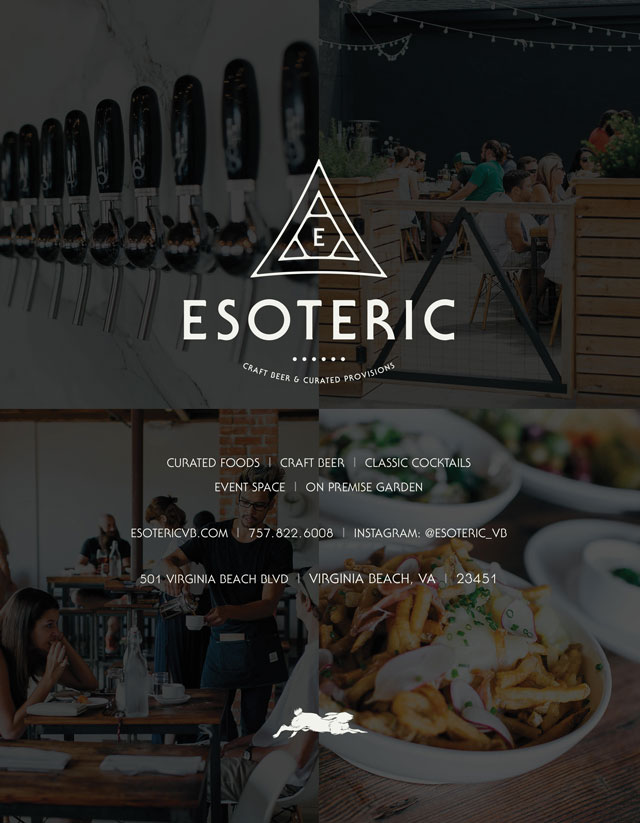
For more on Esoteric’s carefully curated craft beer, cocktails, and modern American cuisine, visit them online at esotericvb.com or click the flier above!
———————————————————————————————————–
James Hemings was a brilliant and extraordinarily talented man who single handedly changed the way we eat and popularized food that is still eaten hundreds of years later; quite simply, he was light years ahead of his time. Hemings was the first American trained as a French chef, as well as the first chef to cook at an American diplomatic embassy. He expanded the palate of the new experiment called America by bringing crème brulée, meringues, whipped cream, macaroni and cheese, ice cream and French fries to our culinary lexicon.
It is impossible to guess what else he might have been able to accomplish if he was able to be seen as an equal. Perhaps more tragically, the food that he worked for years to perfect seems to be attributed to someone who did the 19th century equivalent of cut and paste, and was effectively whitewashed from the annals of history.
We, as Americans, owe a culinary debt to Hemings that we simply cannot repay. One can only hope to sing out his accomplishments up the mountain of Monticello and beyond to give this son of Virginia the voice he was never truly able to have.

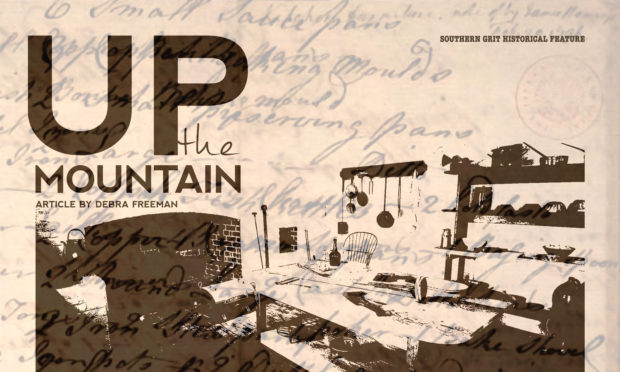

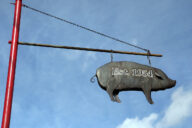
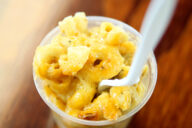
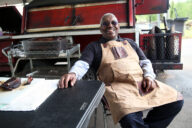

No Comments